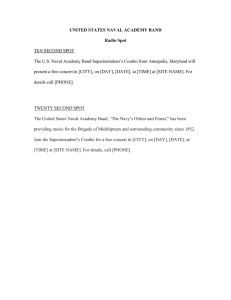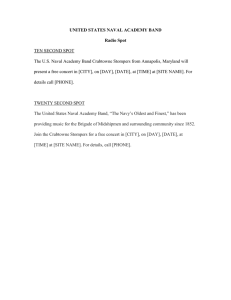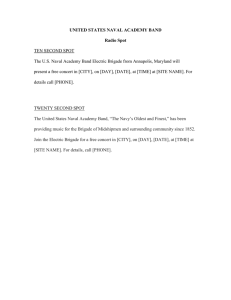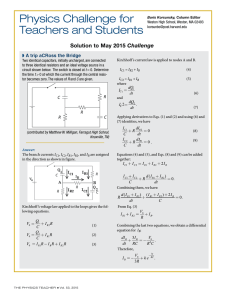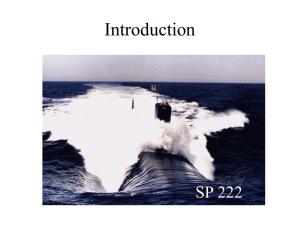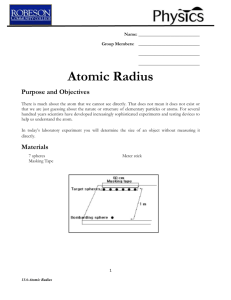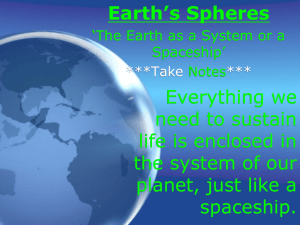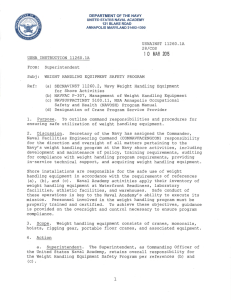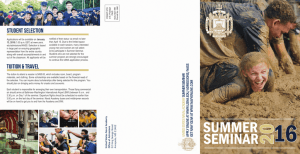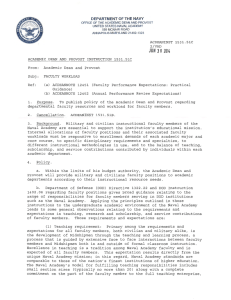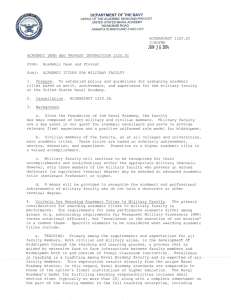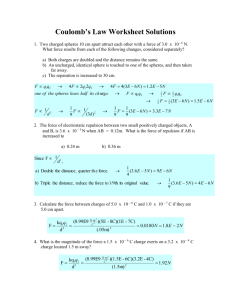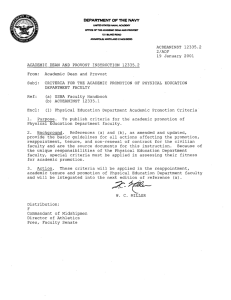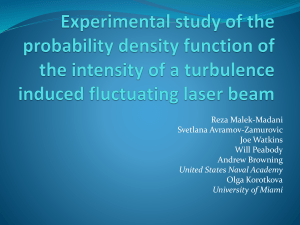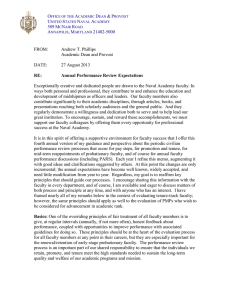The Three Stooges
advertisement
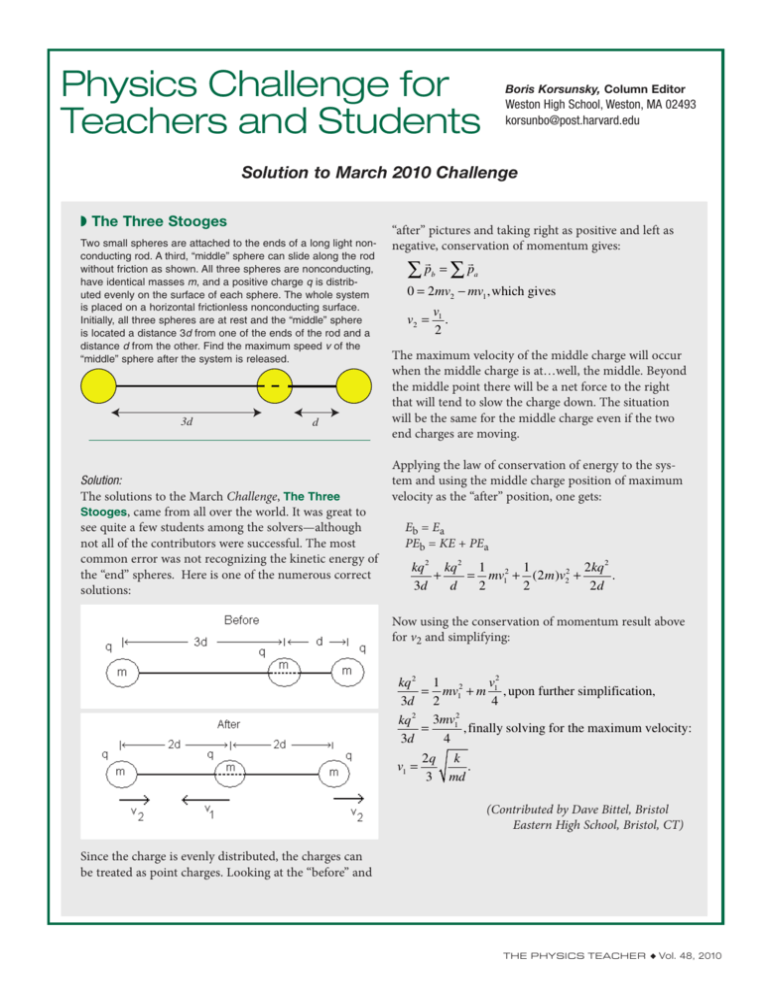
Physics Challenge for Teachers and Students Boris Korsunsky, Column Editor Weston High School, Weston, MA 02493 korsunbo@post.harvard.edu Solution to March 2010 Challenge w The Three Stooges Two small spheres are attached to the ends of a long light nonconducting rod. A third, “middle” sphere can slide along the rod without friction as shown. All three spheres are nonconducting, have identical masses m, and a positive charge q is distributed evenly on the surface of each sphere. The whole system is placed on a horizontal frictionless nonconducting surface. Initially, all three spheres are at rest and the “middle” sphere is located a distance 3d from one of the ends of the rod and a distance d from the other. Find the maximum speed v of the “middle” sphere after the system is released. 3d d Solution: The solutions to the March Challenge, The Three Stooges, came from all over the world. It was great to see quite a few students among the solvers—although not all of the contributors were successful. The most common error was not recognizing the kinetic energy of the “end” spheres. Here is one of the numerous correct solutions: “after” pictures and taking right as positive and left as negative, conservation of momentum gives: ∑ pb = ∑ pa 0 = 2 mv2 − mv1 ,which gives v2 = v1 . 2 The maximum velocity of the middle charge will occur when the middle charge is at…well, the middle. Beyond the middle point there will be a net force to the right that will tend to slow the charge down. The situation will be the same for the middle charge even if the two end charges are moving. Applying the law of conservation of energy to the system and using the middle charge position of maximum velocity as the “after” position, one gets: Eb = Ea PEb = KE + PEa kq 2 kq 2 1 2 1 2 kq 2 + = mv1 + (2 m )v22 + . 3d d 2 2 2d Now using the conservation of momentum result above for v2 and simplifying: v2 kq 2 1 2 = mv1 + m 1 , upon further simplification, 3d 2 4 2 2 mv 3 kq 1 , finally solving for the maximum velocity: = 3d 4 v1 = 2q k . 3 md (Contributed by Dave Bittel, Bristol Eastern High School, Bristol, CT) Since the charge is evenly distributed, the charges can be treated as point charges. Looking at the “before” and The Physics Teacher ◆ Vol. 48, 2010 We are also pleased to recognize the following contributors: Bruce Barnett (Johns Hopkins University, Baltimore, MD) R. R. Bukrey (retired, Loyola University, Evanston, IL) Phil Cahill (Lockheed Martin Corporation, North Yorkshire, United Kingdom) Dominic Calabrese (Sierra College, Rocklin, CA) Daniel Cartin (Naval Academy Preparatory School, Middetown, RI) Craig Caylor (Westminster College, New Wilmington, PA) R. C. Dhandhania (KalraShukla, Mumbai, India) Don Easton (Lacombe, Alberta, Canada) Hasan Fakhruddin (The Indiana Academy for Science, Mathematics, and Humanities, Ball State University, Muncie, IN) Michael C. Faleski (Delta College, Midland, MI Fernando Ferreira (Universidade da Beira Interior, Covilhã, Portugal) Art Hovey (retired, Milford, CT) Mark Lenfestey (Homestead High School, Fort Wayne, IN) John Mallinckrodt (Cal Poly Pomona, Pomona, CA) Jeff Melmed (Eastern Maine Community College, Bangor, ME) Daniel Mixson (Naval Academy Preparatory School, Newport, RI) Eugene P. Mosca (U.S. Naval Academy, Annapolis, MD) Carl E. Mungan (U. S. Naval Academy, Annapolis, MD) Clark M. Neily, Jr. (Hermon’s of Alaska Christian School, Allston, MA) Frank Noschese (John Jay High School, Cross River, NY) Pascal Renault (John Tyler Community College, Chester, VA) Jason L. Smith (Richland Community College, Decatur, IL) Clint Sprott (University of Wisconsin – Madison, WI) Ryan Yancey (Lancaster High School, Lancaster, CA) Many thanks to all contributors and we hope to hear from you in the future! Please send correspondence to: Boris Korsunsky korsunbo@post.harvard.edu The Physics Teacher ◆ Vol. 48, 2010
